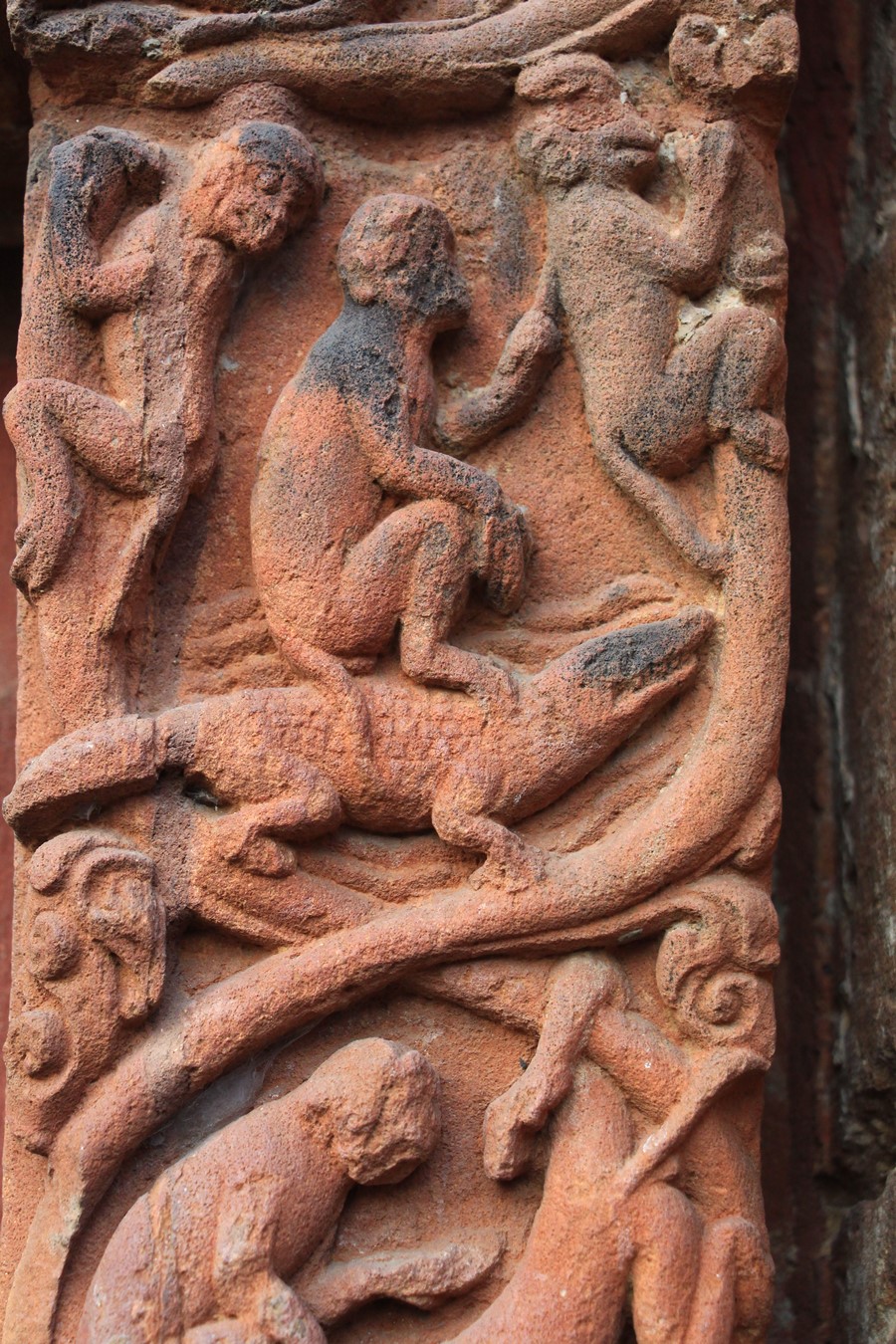Crocodiles and crocodile products are in use for medical purpose in many countries across the Indian ocean. Stories about this animal were gathered and written by students. They are all part of a pedagogical project, funded by the National University of Singapore and the Université de Paris. The Bestiary site is a work-in-progress and a participatory educational tool, representing animals whose products or body parts are used to promote health and healing.
Precious Crocodylus
A Story by Leong Ze Hao
The Siamese Crocodile (Crocodylus siamensis; siamensis – ‘belonging to Siam’) is a moderately-sized (rarely exceeding 3m in length) species of crocodile native to freshwater habitats in parts of Southeast Asia such as Indonesia, Laos, Cambodia, Vietnam and Thailand. It is currently categorized as ‘critically endangered’ on the IUCN Red list and estimates suggest that only 500-1000 mature individuals remain in the wild (Bezuijen et al., 2012). The species is recognized by a prominent bony crest behind each eye, and is known to have a mild temperament compared to the other crocodilians. Attacks on humans by this species is extremely rare (Cox, 1998).
Crocodile (Sundarban, West Bengal, India, 2012) © Leo Jalais
Prominence in Thai culture
Peoples’ perception of crocodiles in Thailand, not unlike that of other reptiles in many cultures across the world, has been mediated by our innate fear (possibly an evolved behaviour for us to avoid dangerous animals). The siamese crocodile, despite its non-aggressive nature, has taken up mostly antagonistic roles in Thai cultural depictions. The most famous of them is a folktale ‘Krai thong’ (ไกรทอง) which details a shapeshifting, man-eating crocodile lord named ‘Chalawan’ (ชาละวัน) falling in love with a rich man’s daughter, eventually abducting her to his cave, only to get slayed by the main protagonist of the story, the crocodile hunter krai thong.
I did not enjoy this story as much as the other children because I grew up watching Steve Irwin’s ‘The Crocodile Hunter’ and became an avid admirer of the Crocodiles. Personal feelings aside, a story like Krai thong not only highlights Thai perceptions of crocodiles as vile and evil creatures, but also illustrates the belief that these animals were not unlike humans at all. They are imagined to have human-like feelings and are capable of love. The crocodile lord’s ability to shapeshift into a man, his infatuation with a human lady, and the presence of many crocodile wives who hung out with him in his cave (yes, he did have those too) are evidence to this.
The Siamese crocodiles’ medicinal uses
Despite being critically endangered in the wild, the siamese crocodiles are a species that is extensively farmed and exploited across Southeast Asia. While much of it is for the crocodile leather trade, the medicinal properties that the crocodiles have to offer are also of extreme value.
> Crocodile Oil Burn Ointment
Crocodile oil, extracted from the fatty tissues of crocodiles (mostly from Crocodylus siamesis) is fairly popular in Traditional Chinese Medicine across China and Southeast Asia. It is thought to be able to cure illnesses and skin conditions (Venter 1985). Crocodile Oil Burn Ointment (COBO) is one of the products. Originally developed in China according to a TCM formula, COBO is synthesized from natural minerals, crocodile oil and Chinese herbal medicines. When tested on lab mice with burn wounds, COBO accelerated healing and regeneration of hair follicles on the surface of the skin. In addition to its burn-healing properties, COBO was also observed to have anti-inflammatory effects on mice with xylene-induced ear inflammations (Venter 1985).
> Antibacterial activity of Crocodile Blood Plasma
Crude plasma extracted from the blood of of Crocodylus siamensis has been found to have antibacterial activity against pathogenic bacteria and has novel applications in the field of medicine. Results have shown that up to 80% growth inhibition was achieved with up to six strains of Staphylococcus aureus, Salmonella typhi, Escherichia coli, Vibrio cholerae, Pseudomonas aeruginosa, and Staphylococcus epidermidis, making the plasma of the Siamese crocodile a strong potential candidate for a robust antibiotic (Kommanee et al., 2012).
> Antiamoebic and Antitumor Compounds of Crocodiles
Another Asian Crocodile species native to India, Crocodylus palustris, more commonly known as ‘mugger crocodiles’, have also been found to have great potential in the field of medicine. Lab tests have shown that the sera of Crocodylus palustris was able to effectively shut down the viability of amoebae (A. castellanii), and organ lysates were discovered to have considerable cytotoxicity to prostate cancer cells, demonstrating up to 70% host cell deaths (Siddique et al., 2017). While additional research needs to be done in order to realize the potential presented, it does not change the fact that the antiamoebic and antitumor properties of crocodile lysates and sera look incredibly promising.
Crocodile and monkeys (Mukteswar temple, Orissa, India, 2018) © Leo Jalais





